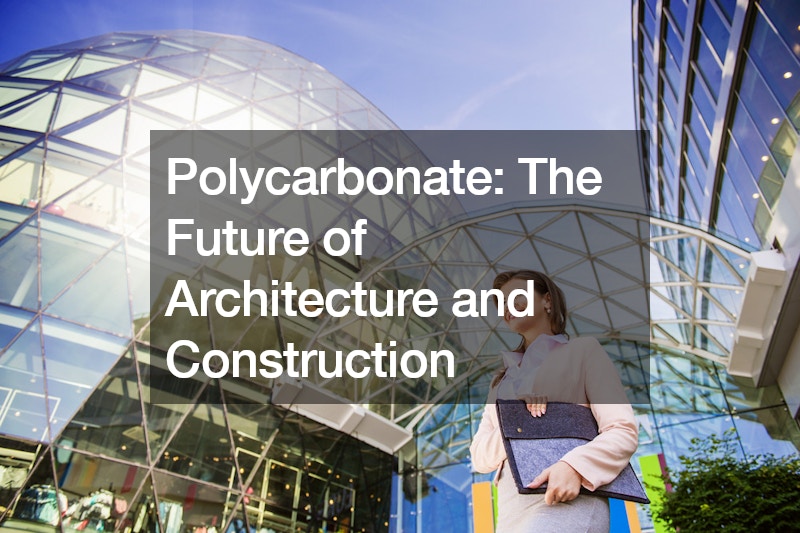In modern architecture and construction, one material is making significant waves: polycarbonate. Known for its versatility and robustness, polycarbonate is rapidly replacing traditional materials like glass and acrylic, offering a range of benefits that make it a preferred choice for modern building projects.
What is Polycarbonate?
Polycarbonate is a synthetic plastic made from the reaction of bisphenol A with phosgene. Its unique molecular structure gives it several advantageous properties, including high strength, impact resistance, and excellent thermal insulation. These attributes make polycarbonate a standout material in various applications, from eyeglasses and appliances to vehicles and architectural structures.
Types of Polycarbonate Panels
Polycarbonate panels come in various forms, each designed for specific uses:
Multiwall Panels
These panels are composed of several layers separated by hollow chambers, providing excellent insulation properties. They are ideal for roofing, cladding, and greenhouse glazing. The air pockets between the layers reduce heat transmission, making them energy efficient.
Corrugated Panels
Featuring a wavy or ribbed surface, corrugated panels are used for roofing and siding. They offer natural light transmission, impact resistance, and flexibility during installation. Their structure also prevents water accumulation.
Solid Panels
Resembling glass or acrylic sheets, solid panels are used for windows, skylights, security barriers, and protective screens. They offer clarity and strength, making them suitable for high-impact applications.
Beyond these main categories, polycarbonate panels are available in various specialized forms. For instance, bullet-resistant panels are used in bank teller windows and military vehicles, while soundproof panels with a honeycomb structure are installed along highways. Embossed panels diffuse light, reduce glare, and provide privacy, while polycarbonate mirrors offer durability and weather resistance. Colored panels, used both indoors and outdoors, enhance architectural designs, adding aesthetic appeal to structures.
Advantages of Polycarbonate
1. Increased Strength and Impact Resistance
Polycarbonate is renowned for its strength. It is 250 times stronger than standard glass and 30 times stronger than acrylic. This high strength is due to its long, linear polymer chains, which give it a high molecular weight. Rooflights benefit greatly from the material’s exceptional strength. Polycarbonate dome rooflights are virtually unbreakable, making them an excellent choice for roofs in regions susceptible to storms, hail, and severe weather conditions. Its impact resistance makes it virtually unbreakable, an excellent choice for roofs in areas prone to storms, hail, and harsh weather conditions. Unlike glass, polycarbonate will not shatter or break under impact.
2. Chemical Inertness
Polycarbonate exhibits inertness towards water, bases, acids, oils, alcohols, and solvents. Its stable carbon-to-carbon and carbon-to-oxygen covalent bonds withstand chemical breakdown under typical environmental conditions, contributing to its longevity and durability.
3. Thermal Insulation Properties
Multiwall polycarbonate panels can insulate 60% better than glass panels. The air chambers between the layers act as insulators, reducing heat transmission. Additionally, polycarbonate has naturally low thermal conductivity compared to glass or metal, making it an energy-efficient material.
4. Lightweight
Polycarbonate is significantly lighter than glass, wood, and metal due to its amorphous, non-crystalline molecular structure. This lower density reduces transportation costs and lessens the compressive and tensile stress on surrounding materials. As a result, foundations can be lighter, using less concrete and steel, which leads to a reduced carbon footprint.
5. Ease of Installation
Polycarbonate’s lightweight nature makes it easier to handle, requiring smaller installation crews and reducing labor costs. This ease of installation, combined with its durability, makes it a cost-effective choice for many construction projects.
Architectural Innovations
Polycarbonate’s ability to transform a building’s appearance throughout the day makes it a favorite among architects. Notable examples of polycarbonate in architecture include:
- Bradbury Works, London: This retail and office building features a steel frame clad with aluminum and polycarbonate panels, creating a translucent facade that changes with the light.
- Glorya Kaufman Performing Arts Center, Los Angeles: This center boasts a 100% recycled polycarbonate facade made from post-consumer recycled plastic, showcasing sustainability.
- Public Structure in Japan: Built by graduate students, this structure uses a robust timber frame covered in transparent polycarbonate sheets, ensuring that plants receive natural light.
Disadvantages and Environmental Concerns
While polycarbonate has numerous advantages, it also has some drawbacks. It is not completely resistant to UV radiation, and prolonged exposure to sunlight may cause yellowing. However, most polycarbonate sheets have a resin coating and UV stabilizers to mitigate this issue.
Polycarbonate is also susceptible to scratches due to its relatively soft surface. Coatings or treatments can enhance scratch resistance, but it remains a concern in high-traffic areas.
Another consideration is the environmental impact. Polycarbonate is derived from fossil fuels, and bisphenol A (BPA), one of its main ingredients, has been linked to health effects. Although not all polycarbonate products contain BPA, this has raised environmental and health concerns. Researchers are working on developing BPA-free alternatives to address these issues.
Key Takeaways
Polycarbonate’s unique properties make it a valuable material for a wide range of applications in architecture and construction. Its strength, lightweight nature, thermal insulation, and ease of installation provide numerous advantages over traditional materials. Despite some drawbacks, the innovations and ongoing developments in polycarbonate technology suggest a promising future for this versatile material in the construction industry. As we continue to explore and refine its uses, polycarbonate is set to play a significant role in shaping the buildings of tomorrow.
.


